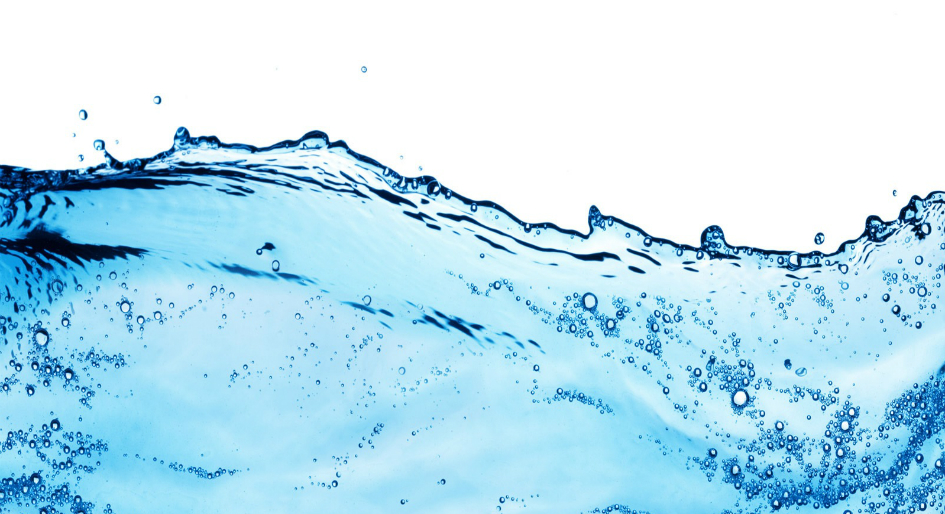Water damage in condominium buildings remains a pervasive problem, yet there remains a disconnect between homeowner awareness and the risks of water leaks and damage.
Based on their 2018 cross-Canada survey of over 3,000 people, Quebec lender Desjardins Group found that water damage was the number one cause of loss among homeowners. Nearly half of those respondents were unaware of the potential sources of water leaks or how to prevent them.
A 2019 Chubb Homeowners’ Risk Survey also revealed that no more than 20 percent of homeowners took pre-emptive measures to reduce the risk of water leaks in their dwellings despite water damage being among their top three concerns.
Water contamination level and extent of damage
Water contamination from leaks in condo buildings is typically classified by the source and nature of the water contamination, with each water source impacting the cost of remediation differently. Water contamination classification can help establish the severity and guide the appropriate response and remediation measures. In addition, it also helps assess the cost of remediation. Professionals generally classify the water source into the following three categories:
Clean Water: Clean or white water refers to water that does not pose an immediate health risk. Clean water typically originates from sanitary or hygienic sources like leaking domestic cold or hot water pipes, sink(s) or bathtub overflows, appliance malfunctions, rainwater and melted snow. While clean water may not contain harmful contaminants initially, it can become contaminated if left untreated or if it comes into contact with other materials.
Grey Water: Grey water contains some level of contamination that may cause discomfort or illness if ingested. This type of water may originate from washing machines, dishwashers, or clean toilet bowls. While it is not as hazardous as black water, proper handling and cleanup are necessary to prevent further contamination and potential health risks.
Black Water: Black water is highly contaminated and poses a significant health risk as it may contain pathogens, toxins, and other harmful substances. Sources of black water include sewage backups, flood waters, and water from sources with a high risk of contamination. Cleanup and restoration efforts for black water incidents require specialized training and equipment due to the severe health risks associated with exposure.
To minimize health risks and additional property damage, it is crucial that unit owners and building managers address water leak damages promptly and that professionals be engaged when dealing with contaminated water.
Causes of water leaks in condos
Water leaks and damage can significantly impact condominium buildings more than single-family dwellings. In fact, due to the vertical nature and design of condominiums, a water leak in a unit can negatively impact units adjacent to and below the affected unit. Water leaks can also impact the building’s common elements, shared utilities, and structural elements.
The potential risks of water damage may vary based on factors such as construction, location and maintenance. The causes of water leaks are often related to materials, installation, maintenance and operational issues. Some of the most common sources and causes of leaks affecting condominiums include:
Pipe Leaks and bursts: Pipe leaks and bursts in domestic, storm, rain and waste piping in condominium buildings can significantly and negatively impact multiple building floors. The causes of pipe leaks in condominium buildings may be due to aging or corroding pipes, high water pressure, water hammering, freezing and thawing, poor design or installation, inadequate pipe support, improperly sealed, connected or soldered joints, pipe blockages and clogs, material defects, external damage, and lack of maintenance.
Roof leaks: Because high-rise condominium buildings often have flat roofs, they are susceptible to water pooling and leaking through roof membranes, often leading to water infiltration into multiple units. Some common causes of roof leaks include improper design, poor roof installation, lack of maintenance, bird or pest damage, aging roof materials, damaged flashing, cracked roof membranes, sealant deterioration, ice dams, structural movement, and water penetration at poorly sealed rooftop HVAC systems, vents pipes and skylights.
HVAC system issues: Heating, Ventilation and Air-Conditioning (HVAC) systems in condominium buildings are complex, with many components. Depending on the design and requirements of the system, various fluids, including water, brine, and glycol, are used. Refrigerants and oil may also still be present in older HVAC systems. HVAC components vary based on the condominium building requirements but generally include heat pumps, air handling units, fan coil units, cooling towers, boilers, humidifiers, dehumidifiers, pumps, valves, piping and ductwork. Leaks can be due to poor design or component installation, condensate drain blockage, faulty condensation pans, refrigerant leaks, poorly sealed ductwork, frozen evaporator coils, improperly installed or damaged insulation, faulty pumps and seals, excessive humidity, corrosion of components and piping, vibration and movement, and poor maintenance practices.
Sprinkler system malfunctions: High-rise condominiums typically have sprinkler systems for fire protection, and malfunctions can cause unintended water releases. Common causes of water leaks include corroding metal pipes, fittings and components, freezing and thawing, mechanical damage, faulty sprinkler heads, water hammering, faulty valves, aging components, seal and gasket deterioration, improper installation or system modification, and lack of regular maintenance.
Window and façade leaks: The leading causes of window leaks in high-rise condominiums include poor window installation, damaged or missing sealant, inadequate flashing, cracked or damaged facade materials, defective window frames, faulty joints and connections, lack of waterproofing, material deterioration, building movement, and insufficient maintenance.
Basement flooding: Condominiums may have basements prone to flooding, especially in areas with a high water table. Common reasons for water-related issues in the foundations and basements include poor drainage systems, high water tables, cracked foundation walls, poor waterproofing, lateral pressure from soil, sewage line backups, surface water runoff, faulty sump pump systems, foundation settling or shifting, cracked basement floors, and plumbing leaks.
Appliance leaks: Household appliances, including dishwashers, washing machines, water coolers, ice makers, water filters and water boiler tanks, can leak and cause water damage. Common causes include overloading of washing machines, clogged water and drain lines, defective or corroded fittings, seals and pumps, faulty pressure relief and bypass valves, frozen evaporator coils in air conditioners, damaged water softener resin tanks, worn-out seals, aging wax seals in toilet bowls, leaking toilet tanks or bowls, and aged seals and loose connections in faucets.
Preventative measures and maintenance
Many water damage claims can be prevented by taking proactive steps to reduce the risk of water damage. By adopting preventative measures, performing regular inspections and maintenance, and promptly responding to issues, unit owners and building management can help lower the risk.
Unit owners
Unit owners should begin by learning what water damage looks like. They should also learn how to identify and address potential sources of water-related problems and, in an emergency, know how to turn off the water. Owners should also learn how to invest in regular home maintenance. Simple steps to reduce the risk of water leaks and damages include:
- Installing leak detection sensors, automatic water shut-off devices, and HVAC system switches.
- Placing a drain pan under washing machines and flexible water supply lines.
- Avoiding overloading washing machines.
- Checking for corroded pipes and damaged hoses.
- Checking dishwasher door seals.
- Replacing aged water heaters and appliances.
- Repairing or replacing leaking faucets and toilets.
- Setting the heat at a minimum of 18 degrees in units that serve as secondary homes or are unoccupied for extended periods.
Building management
Condo managers are also crucial for preventing water leaks and mitigating potential damages to buildings. Water leak prevention programs may include:
Regular inspection: Implementing a routine inspection schedule for all key areas prone to leaks, including roofs, windows, foundations, plumbing systems, and common areas. Maintaining a log of leakage occurrences can be very helpful in diagnosing the cause of leaks. Logs should include photos and information such as location of the leak(s), time of day and environmental conditions.
Maintenance programs: Establishing a comprehensive maintenance program for plumbing systems, including regular checks for leaks, pipe integrity, and proper HVAC and fire sprinkler system functioning.
Proper construction and installation: Ensuring the construction and installation of building components, such as roofs, windows, and plumbing systems, meet industry standards and best practices.
Waterproofing: Periodically investing in proper exterior surface and basement and foundation waterproofing to prevent water infiltration.
Landscaping and grading: Ensuring the landscaping and grading around the building directs water away from foundations and that the drainage system is functioning effectively.
HVAC system maintenance: Regular service and maintenance of HVAC systems to prevent leaks from cooling towers, riser pipes, air conditioning units, and associated components.
Sump pump maintenance: If applicable, periodically testing and maintaining sump pump systems to ensure they function correctly in case of flooding.
Pipe insulation: Insulating pipes, especially those in unheated or exposed areas, to prevent freezing and potential bursts.
Emergency response plan: Developing and communicating an emergency response plan for water leaks and ensuring staff and residents know the proper steps to take in case of a water leak.
Education and awareness: Educating residents about water conservation practices and the importance of promptly reporting leaks.
Tenant education: Providing tenants with guidelines on properly using and maintaining plumbing fixtures and appliances to reduce the risk of water leaks.
Up-to-date records: Maintaining up-to-date records of building systems, including plumbing, roofing and HVAC systems, to facilitate efficient and targeted maintenance.
Monitoring and technology: If possible, installing water monitoring systems or leak detection technology to identify issues early.
Emergency shut-off procedures: Ensuring that residents and staff know the location and proper use of emergency shut-off valves for water supplies.
Collaboration with professionals: Working closely with qualified contractors, engineers, and other professionals to assess and address potential vulnerabilities.
Regular inspections, preventative maintenance, and an emphasis on resident education can help mitigate water-related issues and leaks within condominiums.
Condo flood liability
When a leak or flood in a unit causes water damage to a lower or adjacent unit, the responsibility for the cost of repairs typically depends on the circumstances and the specific regulations outlined in a condo’s governing documents and bylaws. Responsibility for damage from a water leak can also depend on the terms of the rental agreement in the case of a rented unit.
Generally, the condo corporation’s insurance policy will cover repairs to structural elements, shared utilities and common areas, even when a unit within the building is the cause of the damage. If the water damage results from a common element failure, the corporation’s insurance will usually cover the cost of repairs. The corporation’s bylaws may determine the responsibility for the deductible, which can be shared among affected unit owners or borne by the unit owner where the leak originated.
In the absence of negligence or a specific bylaw making a unit owner liable for water damage to another unit, each unit owner and their insurer are generally responsible for the cost of the damage to their unit. Owners must also pay their insurance deductible.
It is advisable for unit owners to promptly report water leak damages to the property management or condo board. Owners should also quickly report water leaks to their insurance companies that can investigate the cause of the damage and determine liability based on the specific circumstances of the incident.
Legal advice may be sought to clarify responsibilities and rights in complex cases or when it is suspected that a party may have breached a statutory, regulatory or contractual obligation, technical standard or best practice during the installation, maintenance or operation of some of the condo building’s structural or mechanical elements.
Denis Gagnon is currently the Senior Engineer for Mechanical and Materials Claims at Arbitech Inc. He has more than a decade of experience as a forensic mechanical and materials/metallurgical engineer and expert witness. His project experience in the claims arena has helped determine the root causes of mechanical and material failures through non-destructive and physical testing and inspection of equipment and components to establish evidence-based failure mechanisms.
This article originally appeared in the spring issue of CondoBusiness magazine.








